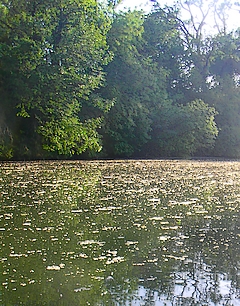 The first fellow was towing a lure that looked like a plucked Olive chicken carcass – minus saran wrap and foam plate. I says, “what’s your buddy throwing – a pizza?”
The first fellow was towing a lure that looked like a plucked Olive chicken carcass – minus saran wrap and foam plate. I says, “what’s your buddy throwing – a pizza?”
He laughs, “there’s a lot of Bass in here but they ain’t biting today.” He ears back to fling that seaweed colored rooster, and I’m scrambling to avoid the massive stainless trebels.
This fellow knows something I don’t – or else Bass are intent on the closest log hoping there’s no backlash – sending an algae colored poultry meteor into their living room.
I blanked on the “Cotton River,” seems like everyone had done likewise, what with the Cottonwoods surrounding the creek spitting furballs that covered the surface.
Fling, strip. Stop. Remove cotton ball, strip, stop, remove …
Safe to say they weren’t eating white flies – it didn’t really matter what size or pattern you fished, the accumulated cotton would slide down the leader and ensure the top half the fly was snow white.
It was new water and adventuring is always optimism at the next bend, I’ll return later in the year when the trees finish bleeding duff.
Sunday was the secret trout creek I’d seen last year. I took Wannabe.Travelwriter in tow to see if we could scare some fish, explaining that this was “adventuring” rather than fishing, as fishing requires confirmed quarry, versus chasing rumor and innuendo.
While the creek and surroundings were visually stunning, the only confirmed sighting was a pod of Sacramento suckers, an indigenous species of Brownline origin. As I was carrying my five weight and a pocket full of gossamer tippet – I feigned disgust, danced around and said, “eww” a lot.
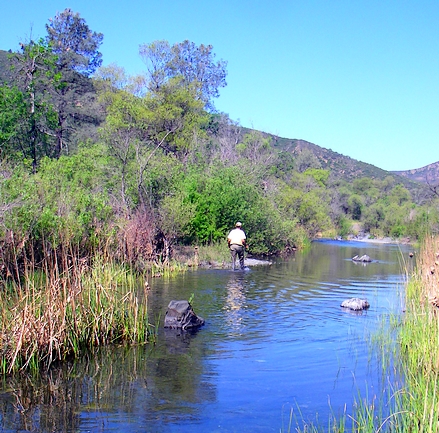
It was our “Butch and Sundance” with the Bolivian army on the bank above. Once breakfast was digested, each campsite erupted in small arms fire while we hugged whatever cover was closest.
All the best water was bullet-riddled – with the shattered remnants of propane bottles, City of Livermore traffic barricade, and unrecognizable plumage of the Coors’ and Bud genus.
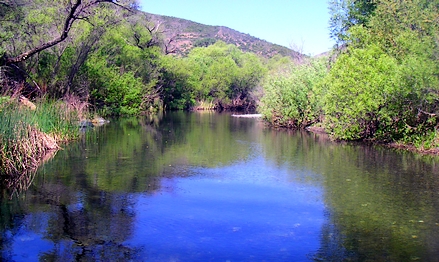
The mayfly population of this little creek is extraordinary. Large mayflies are always the exception rather than the norm, and I’m turning over stream bottom and seeing quite the opposite. Everything that scampered across the exposed rocks were muscular “clinger” mayflies – mostly #10 and #12’s, heavily mottled with Olive and black.
It has to be their diet. Brass and lead are steroids to the mayfly kingdom – which may be why the National Park Service is intent on banning both. Pollution is secondary to park visitors being carried off and eaten by monstrous killer insects.
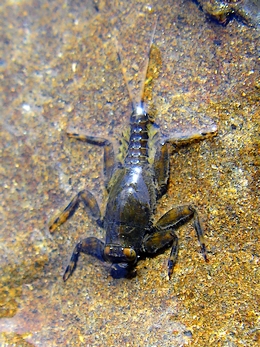 My first blush would be some form of drake – two tails, pronounced mottle on all extremities – and large enough to make you snap off that anemic #16 and reach for the box containing meat…
My first blush would be some form of drake – two tails, pronounced mottle on all extremities – and large enough to make you snap off that anemic #16 and reach for the box containing meat…
With the cupboard stocked so generously and finding many pools deeper than 4 feet, I was really surprised not to see any fish.
Based on the surrounding canyon, this little creek drains an awful lot of real estate, and may be subject to violent scour in wet years. Plenty of bedrock was exposed and enough debris embedded in the surrounding brush was testament to periodic high water velocity.
We fished through the area without so much as a grab; a smattering of large adult mayflies trickled off around midday, but there was nothing to greet them but my camera.
We took a side trip to see the encroaching “Wicker People” – with the water level as desperate as I’ve ever seen it. The drought continues in earnest, and exposed timber lends an eerie aspect.
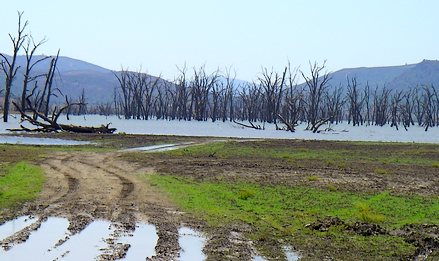
I can imagine attempting to navigate that barricade in the cool of evening with the remnants of a midday six pack as fuel, spooky.
At elevation the wildflowers continue unabated, but the Bear Valley panorama has all but disappeared. Only the California Poppy, our illustrious state flower remains on display.

Not a bad ending to a weekend of “adventuring” – much needed salve for the inevitable fish story featuring that sumbitch SMJ and the big fish he allegedly caught in the snow.
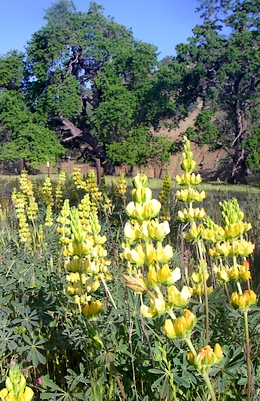 I got answers, and they were meaningful to my “toy” camera – chosen by waterproof versus optics, and I remained riveted by the discussion on f-stop and SLR focal planes. I caught up with the speaker at break to discuss composition, the subtle play of light and dark – and how the subject can be juxtaposed with it’s surroundings to convey meaning.
I got answers, and they were meaningful to my “toy” camera – chosen by waterproof versus optics, and I remained riveted by the discussion on f-stop and SLR focal planes. I caught up with the speaker at break to discuss composition, the subtle play of light and dark – and how the subject can be juxtaposed with it’s surroundings to convey meaning.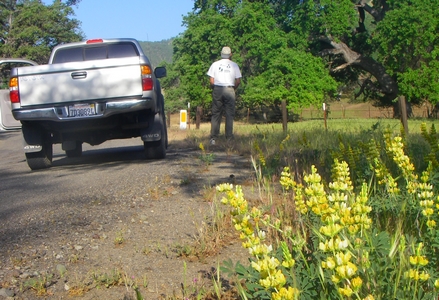

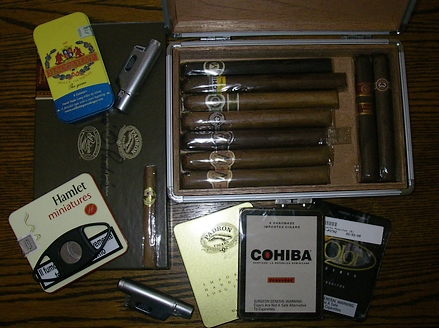



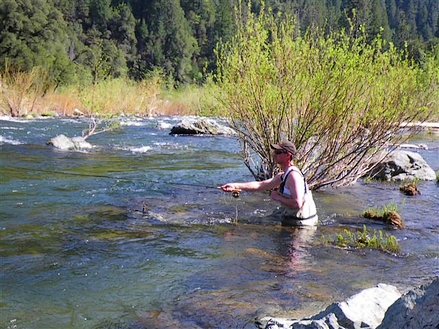
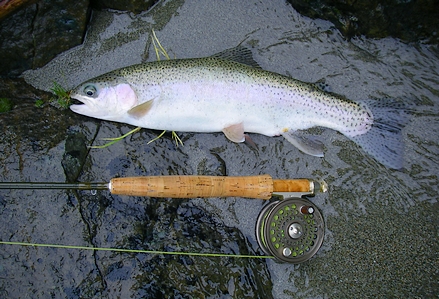
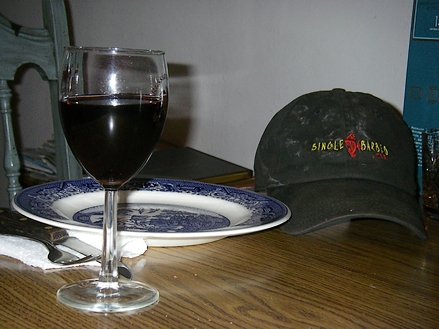
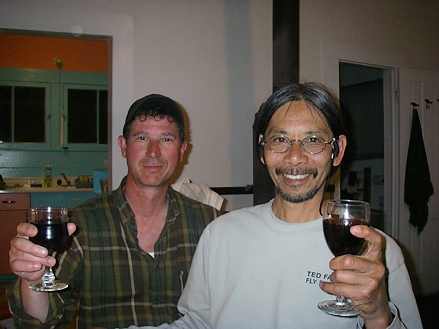
 The first fellow was towing a lure that looked like a plucked Olive chicken carcass – minus saran wrap and foam plate. I says, “what’s your buddy throwing – a pizza?”
The first fellow was towing a lure that looked like a plucked Olive chicken carcass – minus saran wrap and foam plate. I says, “what’s your buddy throwing – a pizza?”

 My first blush would be some form of drake – two tails, pronounced mottle on all extremities – and large enough to make you snap off that anemic #16 and reach for the box containing meat…
My first blush would be some form of drake – two tails, pronounced mottle on all extremities – and large enough to make you snap off that anemic #16 and reach for the box containing meat…

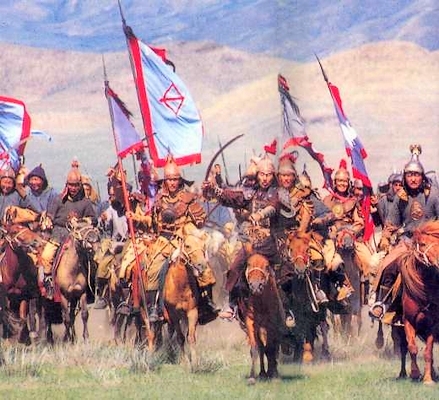
 Pop would see the gear lined up by the back door and hear us revert to “sporting speak”, clipped sentences punctuated by, “you bringing the …” and “did you remember…” and he’d gaze out the window, gauging the rainfall and comment to no one in particular, ” .. another goddamn fishless fishing trip.”
Pop would see the gear lined up by the back door and hear us revert to “sporting speak”, clipped sentences punctuated by, “you bringing the …” and “did you remember…” and he’d gaze out the window, gauging the rainfall and comment to no one in particular, ” .. another goddamn fishless fishing trip.”
 Science like this should stifle them yawns, as it bespeaks of vast changes in your angling habits.
Science like this should stifle them yawns, as it bespeaks of vast changes in your angling habits. Like you I’m the recipient of every strange aberration that is loosely connected to fishing. Today some well meaning cubicle denizen sends me a link to body piercing, featuring fish hooks and the traditional, “Dude, check it out!”
Like you I’m the recipient of every strange aberration that is loosely connected to fishing. Today some well meaning cubicle denizen sends me a link to body piercing, featuring fish hooks and the traditional, “Dude, check it out!”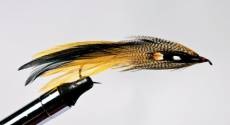 For the auction crowd,
For the auction crowd, 
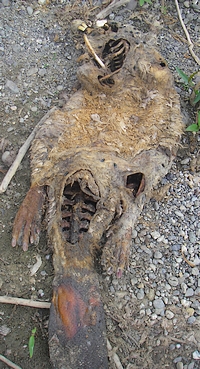 In each of the last two years the release from the lake coincided with the wettest storm, suggesting the water district management blew open the gates in response to what runoff was anticipated. Swelling any river 100 times its normal size in an instant makes a killing machine; it
In each of the last two years the release from the lake coincided with the wettest storm, suggesting the water district management blew open the gates in response to what runoff was anticipated. Swelling any river 100 times its normal size in an instant makes a killing machine; it